By Aaron Knewtson, VP Food and Agribusiness, Compeer Financial 
Will ethanol margins or tax credit incentives generate the highest return on investment five years from now?
That is the question many owners, lenders, and financiers are facing as the current 45Z tax credit incentives drive sequestration infrastructure investment, all while facing a sunset in 2029.
The present value of 45Z cash flows for ethanol producers with carbon capture and sequestration (CCS) already in place creates significant near-term value for shareholders. It also increases collateral and borrowing capacity for lenders to consider, particularly for ethanol producers outside the corn belt.
Producers in the corn belt who can leverage CCS, access low carbon fuel standard (LCFS) markets, and benefit from a low corn basis appear to be in the strongest position when it comes to generating value and making a compelling case for higher advance rates from lenders.
This competitive economic advantage, or moat, is substantial in the near term but the long-term advantage of CCS is less certain because of legislative risk. As more producers lower their carbon intensity (CI) scores, the more fragmented the low CI ethanol market becomes, which could shift negotiating power back to blenders allowing them to capture more of the value — similar to what has occurred in the RIN market — so credit and equity returns on investment compete for the near-term cash flows from CCS benefits.
Lenders may respond with shorter amortization schedules and tighter covenants that shift more return risk to shareholders, so any extension of 45Z credits beyond the current sunset date would provide a boon to ethanol owners with lower debt-to-equity balance sheets.
While 45Z tax credits represent substantial income and debt service opportunities in the near term, the sunset of 45Z in 2029 looms large. Lenders underwriting CCS loans expected to come online in 2027 or later may see reduced debt service through lower advance rates and shorter amortization periods. This approach reduces repayment risk by essentially converging 45Z cash flows to the apparently more stable and longer dated 45Q cash flows.
What this means for producers and lenders:
For ethanol producers and their lenders, the opportunity appears to outweigh the legislative risk. Today’s 45Z credits provide strong short-term economics, but long-term positioning will depend on disciplined balance sheets, diversified market access, and flexibility in financing strategies.





